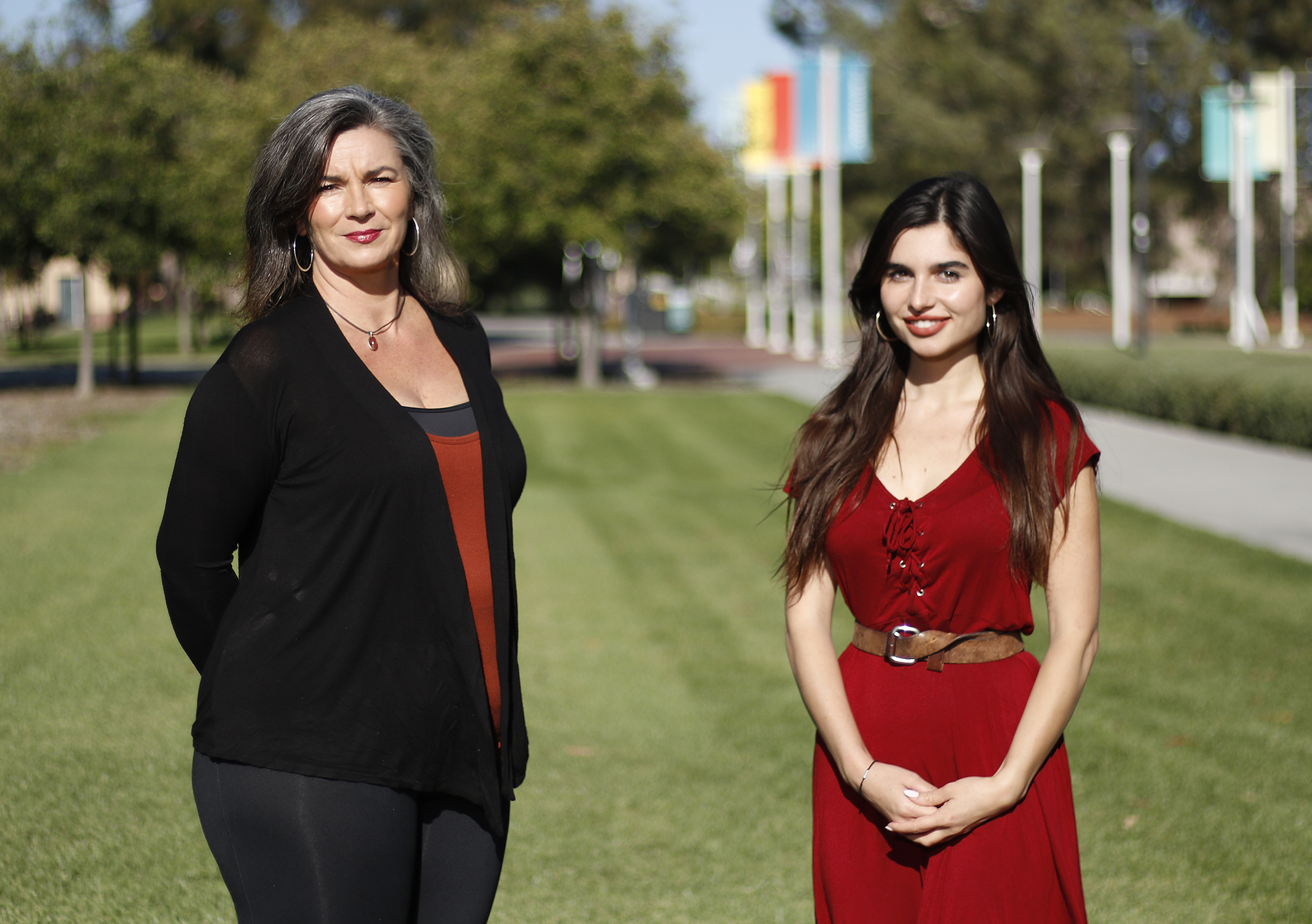Firelight Entertainment Presents ‘A Midsummer Night’s Dream’
Gabrielle Korte and Sian Ayres-Harden Film the Bard’s Comedy During Lockdown

COVID-19 has rendered filmmaking an arduous task; without the ability for in-person meeting, the nature of acting has changed dramatically. But pandemic restrictions have also inspired creative new ways of thinking. It was the global shutdown, in fact, that led Gabrielle Korte and Sian Ayres-Harden to create Firelight Entertainment, a female-led production company that creates film, television, theater, and mixed media.
Korte and Ayres-Harden met while performing in a Naked Shakes production of A Midsummer Night’s Dream while they were undergrads in UCSB’s theater department. They became fast friends and promised that one day they would make a film together. After graduating, the pair entered the professional world, honing their acting and directing skills. When COVID shutdown live entertainment, Korte and Ayres-Harden decided to bring their pledge to fruition, founding Firelight Entertainment.
Get the top stories in your inbox by signing up for our daily newsletter, Indy Today.
For the production company’s first foray, they decided to film William Shakespeare’s A Midsummer Night’s Dream, with actors contributing their roles remotely. Written in the late 16th century, Midsummer is one of the Bard’s most beloved comedies and includes love triangles, magic, and a play within a play. Firelight created a new way to bring the Shakespearean play to an audience, one in which the actors stand center screen.
While working on the film, actors taped scenes from their own homes. It took just under a month and a half to produce, was shot independently, and was subsequently synchronized. Editing, directing, and skillfully integrating the individual performances into a fluid film weren’t the duo’s only challenge.“There [is] no scenery,” said Korte in an interview with the Santa Barbara Independent. “We were scared that the audience wasn’t going to know where we were in the play.”
Throughout the editing process, Korte and Ayres-Harden added effects to enhance the film’s visual appeal.“[We] expanded some of the big scenes[by inserting]shots of people popping in,”Korte noted. Characters float onto the screen during their scenes, and an actor’s screen is enlarged during a soliloquy. The transitions between scenes are artfully done and fully immerse viewers into the flow of the play.
The visual effects help dramatize the production, but the film relies heavily on the acting. Performers worked without live feedback throughout the filming process, which was challenging.Tasked with imagining their cast members in front of them, Tyler X. Koontz, a UCSB alumnus who plays Bottom, spoke of the difficulty of “not working with your scene partners in the same physical playing space. [I]had to strategically think, this character is the spider web in the corner of the room…this character is the piece of toast on the floor I hadn’t realized I dropped earlier,” he said.
Actress Tonea Lolin, who plays Helena, explained how “acting is all about listening and living,” and that “doing a Zoom production [made her] listen and focus even more, since [she] was not in the physical space with others.”
While remote acting carries a host of challenges, Korte and Ayres-Harden also noticed curious enhancements to some qualities of the performances. With actors’ faces being more visible in the digital production than on a stage, viewers reported the Shakespearean monologues were easier to comprehend; seeing actors’ faces so clearly allowed them to pick up on facial cues they would normally miss during an in-person production, in which the performers are at a distance and props, costumes, and set design can distract viewers.
While Ayres-Harden admitted that their ultimate goal behind their film is to bring happiness to the community with the comedy, she and Korte were also motivated to help the performers. “Actors and actresses have lost work because of quarantine,” Ayers-Harden said, and the film serves as an innovative source of work for the cast members. As for Korte, the “production taught [her] about the power of perseverance.”
411: To watch A Midsummer Night’sDream, see firelightentertainmentco.com/videos.
Every day, the staff of the Santa Barbara Independent works hard to sort out truth from rumor and keep you informed of what’s happening across the entire Santa Barbara community. Now there’s a way to directly enable these efforts. Support the Independent by making a direct contribution or with a subscription to Indy+.



